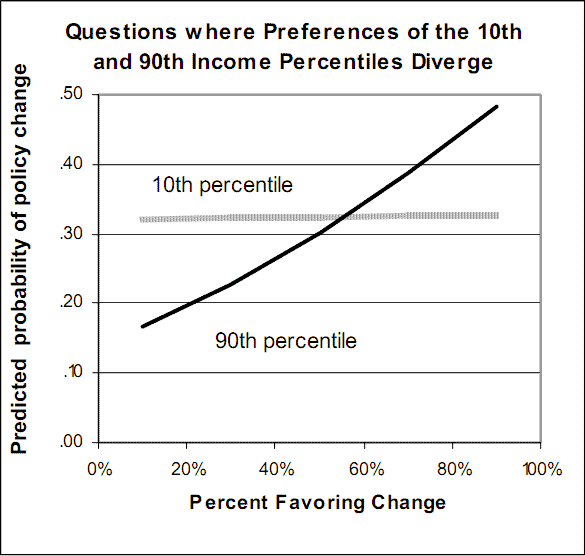Ever since the U.S. Supreme Court ruled in Buckley v. Valeo (1976) that spending money to influence elections is a form of constitutionally protected free speech, the speech of wealthy citizens and Corporations have increasingly dominated public debate. Even worse, money is nearly the only form of speech behind closed doors in the halls of Congress.
Changing Thomas Jefferson’s words only slightly, if speech is the currency of democracy and money is speech then Barry Deutsch’s cartoon below shows the inevitable result:
– Iron Filing

©Barry Deutsch
Barry Deutsch commentary quoting a paper by Martin Gilens (pdf link):
Using an original data set of almost 2,000 survey questions on proposed policy changes between 1981 and 2002, I find a moderately strong relationship between what the public wants and what the government does, albeit with a strong bias toward the status quo. But I also find that when Americans with different income levels differ in their policy preferences, actual policy outcomes strongly reflect the preferences of the most affluent but bear little relationship to the preferences of poor or middle income Americans.In the table above, the dark line represents the opinions of the highest-earning 10% of Americans. The further to the right the dark line goes, the more that top 10% wants a policy change to happen. And the further towards the top the dark line goes, the more likely it is that politicians will make the desired policy change happen. As you can see, the more the top 10% want a change, the more likely it is to happen.
The gray line represents the opinions of the lowest-earning 10% of Americans. As you can see, it’s completely irrelevant what they (er, we?) think. Politicians couldn’t care less. Gilens also has a similar graph showing that politicians barely listen any more to middle-class Americans than they do to poor Americans.



2 Comments
Is anyone surprised? This is the address to Gilens’ paper. The graph is towards the end. Kinda long.
http://www.princeton.edu/~mgilens/idr.pdf
As the old saying goes: Money talks, bullshit walks.